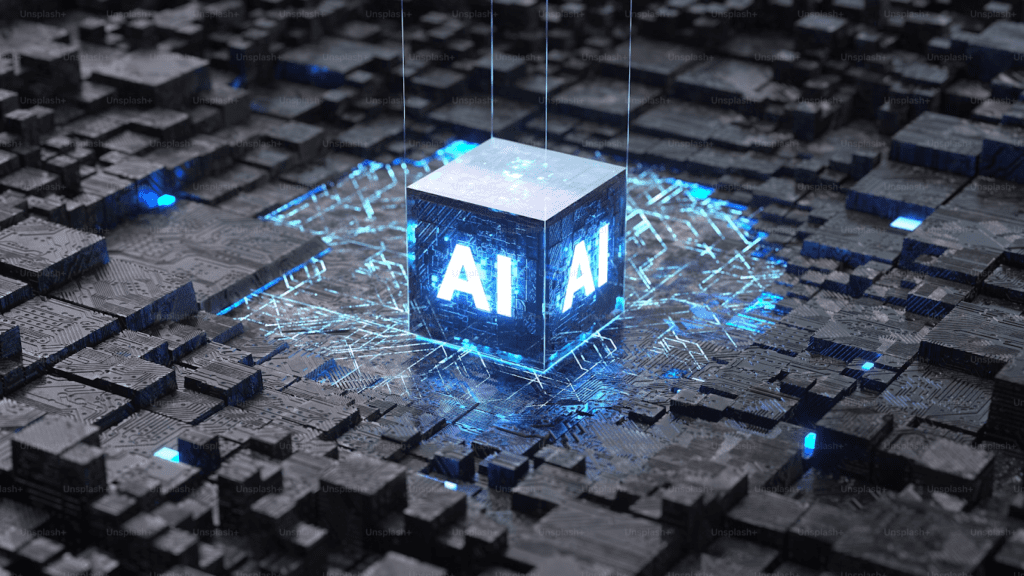In a world where data drives every decision and algorithms shape customer experiences, scaling AI and ML is becoming the new baseline for staying competitive.
Those who treat AI as a side project risk being left behind, while forward-thinking organizations are embedding AI and ML into their DNA, turning insights into action and strategy into results.
But getting AI and ML to operate at scale isn’t as simple as flipping a switch. It requires a seismic shift in mindset, a robust technological backbone, and a deep integration into the very fabric of how a business functions.
Together, let us try to understand how to set the stage for a future where AI and ML aren’t just tools, they’re transformative forces driving the enterprise forward.
The True Cost of Implementing AI & Data Solutions in 2025 - A Comprehensive Guide For Business Leaders
Building the Foundation: Infrastructure and Data Management
At the heart of this foundation is data, your organization’s most valuable asset. Without a robust data strategy, even the most advanced AI algorithms are little more than untapped potential.
To truly harness AI and ML, enterprises need a scalable data infrastructure capable of handling large volumes of diverse data in real-time.
The Role of Feature Stores in AI and ML
A feature store is a centralized repository that standardizes and organizes data features used by machine learning models, allowing teams to access and reuse these features efficiently across projects.
Feature stores enable data scientists to focus more on refining models rather than spending time on repetitive data-wrangling tasks. By leveraging feature stores, enterprises can accelerate the training of AI models and maintain a scalable data infrastructure that evolves with the organization’s needs.
For example, when a machine learning model is trained to predict customer churn, features such as transaction frequency, engagement metrics, or support history are stored in the feature store.
These features can then be reused by other models without the need to rebuild them, boosting the speed of innovation and ensuring data consistency across AI projects.
Cloud and Hybrid Solutions with Code Assets
Code assets are the reusable pieces of code, templates, and pre-built modules that data science teams can deploy across various AI projects, significantly speeding up development cycles.
Cloud platforms like AWS, Microsoft Azure, and Google Cloud have been instrumental in providing scalable infrastructure that supports code asset management. These platforms offer machine learning pipelines, automation tools, and containerized environments that allow code assets to be deployed seamlessly across different AI applications.
According to Deloitte, 67% of enterprises reported faster AI deployments after integrating these platforms into their cloud strategy, demonstrating the importance of a well-organized code asset framework.
A well-managed code asset repository enables rapid experimentation and iteration, reducing the time-to-market for AI solutions. It also facilitates collaboration among data science teams, ensuring that best practices are shared and models are deployed efficiently, regardless of geographical boundaries.
Data Governance and Compliance
Organizations can also implement audit trails for feature stores and code assets to track changes, making it easier to identify and address potential biases in AI models.
Data governance practices should be tightly integrated with the use of feature stores, as these repositories play a crucial role in maintaining data consistency and accuracy.
Ethical AI frameworks need to be established to guide how features are selected, stored, and reused to prevent bias from creeping into machine learning models, ultimately fostering trust and reliability in AI deployments.
Technical Enablers for Scaling AI and ML
Platforms like TensorFlow, PyTorch, and Scikit-Learn have become standard tools in the AI community, providing pre-built modules and algorithms that simplify model development and experimentation.
These frameworks not only reduce the technical complexity associated with AI deployment but also offer scalability to adapt to growing data volumes and computational needs.
Integrating these frameworks into the AI lifecycle allows for rapid prototyping, model testing, and iteration, which are essential for maintaining a competitive edge in dynamic business environments.
Edge Computing: Bringing AI Closer to the Source
This decentralized approach minimizes data transfer times and reduces dependency on cloud infrastructure, making AI and ML solutions more responsive and efficient.
By deploying AI models at the edge, enterprises can gain faster insights and take immediate action, driving operational efficiencies and enhancing the overall customer experience.
Automation and AI-powered DevOps
AIOps enables seamless orchestration of machine learning pipelines, reducing manual interventions and minimizing errors during model updates.
The use of automation tools like Kubernetes, Jenkins, and Docker in combination with AI frameworks allows enterprises to deploy AI models in a more agile and scalable manner.
This approach accelerates the deployment process and provides the flexibility to scale AI workloads up or down based on business needs, optimizing both performance and cost.
MLOps: The Key to Sustaining AI and ML at Scale
MLOps is the practice of integrating machine learning into the software development lifecycle, emphasizing collaboration between data scientists, IT operations, and software engineers.
By adopting MLOps, enterprises can move away from ad-hoc model deployment processes and establish a more systematic, automated approach.
As AI models evolve, MLOps allows teams to manage these changes in real-time, maintaining consistency and reducing the risks associated with model drift or degradation.
Best Practices for Implementing MLOps in the Enterprise
-
Automated Model Training and Deployment:
Automating the training and deployment of machine learning models is crucial for reducing manual errors and speeding up the time-to-market for AI solutions. By setting up continuous integration and continuous deployment (CI/CD) pipelines specifically tailored for machine learning, organizations can rapidly iterate on models and deploy updates with minimal disruptions. -
Monitoring and Management of ML Models:
Monitoring the performance of AI and ML models in real time is essential to ensure they continue delivering accurate and reliable results. MLOps platforms enable enterprises to set up alerts for when models start to underperform or deviate from expected outcomes. This proactive approach helps in identifying issues like data drift, model bias, or performance degradation early, allowing for quicker interventions. -
Version Control and Reproducibility:
Just like in traditional software development, version control is critical in MLOps to manage changes to models, data, and code. Using tools like Git for versioning ensures that data scientists can reproduce experiments, track changes, and roll back to previous versions if needed. This level of transparency is essential for maintaining model integrity. -
Monitoring and Management of ML Models:
Monitoring the performance of AI and ML models in real time is essential to ensure they continue delivering accurate and reliable results. MLOps platforms enable enterprises to set up alerts for when models start to underperform or deviate from expected outcomes. This proactive approach helps in identifying issues like data drift, model bias, or performance degradation early, allowing for quicker interventions.
MLOps enables organizations to turn AI from an experimental tool into a scalable enterprise capability.
By integrating automation, monitoring, and best practices into the AI lifecycle, companies can ensure that their machine learning models deliver consistent value and evolve with the business needs. This enhances the agility of AI deployments, making it easier to adapt to market changes and customer demands.
Empowering Teams: Bridging the Talent and Culture Gap
The success of any AI initiative hinges on having the right blend of talent that can bridge the gap between data science, IT, and business strategy. As organizations strive to build data-driven cultures, investing in upskilling and reskilling their workforce becomes essential.
Data scientists, machine learning engineers, and AI specialists are just part of the equation. Enterprises also need business translators: professionals who can interpret AI insights in the context of business objectives, turning data-driven predictions into actionable strategies.
Creating a culture that embraces AI and ML is critical for scaling these technologies across the enterprise. This means fostering an environment where innovation is encouraged, data-driven decision-making is the norm, and AI literacy is accessible to all employees, not just those in technical roles.
Implementing AI Centers of Excellence (CoEs) can be an effective way to drive this collaboration. These CoEs act as hubs that bring together talent from different parts of the organization to share best practices, tools, and insights, accelerating AI adoption across various departments.
Executives must advocate for AI as a strategic priority while actively participate in shaping the organization’s AI vision. By leading from the front, executives can set the tone for an AI-driven culture that permeates every level of the organization.
Case Study:
Regeneron Pharmaceuticals
Regeneron Pharmaceuticals, a leading biotechnology company, is renowned for its innovative approach to developing life-changing therapies and advancing the field of genomics.
To tackle the challenges of processing vast amounts of genomic data for accelerated drug discovery, Regeneron leveraged AI, ML, and MLOps frameworks in collaboration with Databricks, integrating its scalable data platform to streamline their research workflows and data analysis capabilities.

Leveraging Databricks for AI and MLOps Integration
-
Utilizing Databricks' Feature Store:
Regeneron used Databricks' feature store to manage and standardize the data features used in their machine learning models. This centralized repository of features ensured that data scientists could easily access, reuse, and share features across different projects, reducing redundancy and enhancing consistency in AI model training and deployment. -
AI Model Development and Deployment:
By leveraging Databricks' scalable cloud-based infrastructure, Regeneron was able to rapidly develop, train, and deploy machine learning models capable of analyzing vast genomic datasets. The platform's support for distributed computing and automated model tuning significantly reduced the time required to bring AI models into production. -
MLOps for Continuous Integration and Monitoring:
Databricks' MLOps capabilities enabled Regeneron to automate the continuous integration and deployment of their AI models. This allowed the company to manage model lifecycle operations efficiently, ensuring that models were always up-to-date with the latest data and performing optimally. Real-time monitoring of model performance helped Regeneron quickly identify issues such as data drift or model degradation and take corrective actions to maintain high levels of accuracy. -
Collaborative Environment:
The integration of Databricks provided a collaborative workspace that bridged the gap between data scientists, researchers, and IT specialists. This unified platform enabled cross-functional teams to work together seamlessly, accelerating the experimentation and iteration of machine learning models to refine their predictions and enhance their research outcomes.
Specifically, they achieved a 600x improvement in query runtime, reducing the time required to run queries on their entire genomic dataset from 30 minutes to just 3 seconds. This acceleration allowed their data scientists to focus on higher-value tasks like drug target identification.
Additionally, they saw a 10x increase in the speed of their data pipelines, cutting down ETL processes from 3 weeks to just 2 days. These advancements improved productivity, enabling their teams to support a broader range of studies and experiments, ultimately accelerating the discovery of new drugs and treatments
Regeneron’s journey serves as a blueprint for other organizations aiming to leverage AI and ML to drive innovation and deliver measurable business outcomes in the world of healthcare and beyond.
Key Takeaways to Build a Data Strategy That Works

Scaling AI and ML at an enterprise level is no longer just an option, it's a necessity for organizations aiming to stay ahead in a data-driven world. To unlock the full potential of these technologies, businesses must go beyond isolated projects and embrace a strategic approach that integrates AI and ML into every facet of their operations.

Achieving this requires not just the right tools and infrastructure but a deep cultural shift that fosters innovation, cross-functional collaboration, and a commitment to continuous learning.

MLOps has emerged as the critical enabler of this transformation. By automating and optimizing the AI lifecycle from data preparation and model development to deployment and monitoring, MLOps ensures that AI initiatives are scalable, sustainable, and agile.

It bridges the gap between data science and IT operations, allowing organizations to rapidly adapt to changing business needs while maintaining high standards of accuracy and reliability.

The future belongs to organizations that can not only scale AI and ML effectively but do so in a way that aligns with their long-term vision and ethical standards. With the right approach, AI and ML have the power to redefine industries, create new opportunities, and propel enterprises into a new era of growth and innovation.
Frequently Asked Questions
What are the key benefits of scaling AI and ML at the enterprise level?
Scaling AI and ML at the enterprise level enhances operational efficiency, accelerates decision-making, improves customer experiences, and drives innovation. It enables businesses to leverage data-driven insights for better strategic planning, personalized services, and competitive advantages.
How does MLOps help in deploying AI and ML solutions at scale?
MLOps (Machine Learning Operations) streamlines the AI and ML deployment process by automating the lifecycle stages, including data preparation, model training, deployment, and monitoring. It enables continuous integration and continuous deployment (CI/CD) of machine learning models, ensuring they remain efficient and up-to-date, thereby facilitating scalability and faster go-to-market times.
Why is data infrastructure important for AI and ML scalability?
A robust data infrastructure is crucial for AI and ML scalability as it supports the storage, processing, and management of large datasets. With tools like feature stores and scalable cloud solutions, organizations can ensure consistent data quality, seamless data integration, and efficient model training, which are vital for building accurate AI models at scale.
What role does ethical AI play in scaling AI and ML initiatives?
Ethical AI ensures that AI and ML models are transparent, unbiased, and aligned with ethical guidelines. As enterprises scale their AI initiatives, incorporating ethical AI practices helps build trust, avoid biases, and comply with data privacy regulations, which is essential for responsible AI deployment.
How can businesses measure the business impact of their AI and ML investments?
To measure the business impact of AI and ML investments, organizations should evaluate both quantitative and qualitative metrics. Key indicators include reduced operational costs, improved decision-making speed, enhanced customer engagement, increased revenue, and faster innovation cycles. Understanding these metrics helps businesses gauge the overall effectiveness and scalability of their AI and ML strategies.


